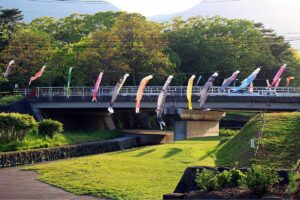The most popular snorkeling spot on Ishigaki Island is Yonehara Beach. Snorkeling in Yonehara is simple, inexpensive, and enjoyable.
The water there is crystal clear and sometimes relatively shallow.
The beach allows you to witness a plethora of sea life, such as corals in shallow regions along the shore, and colorful fish can be seen there as well.
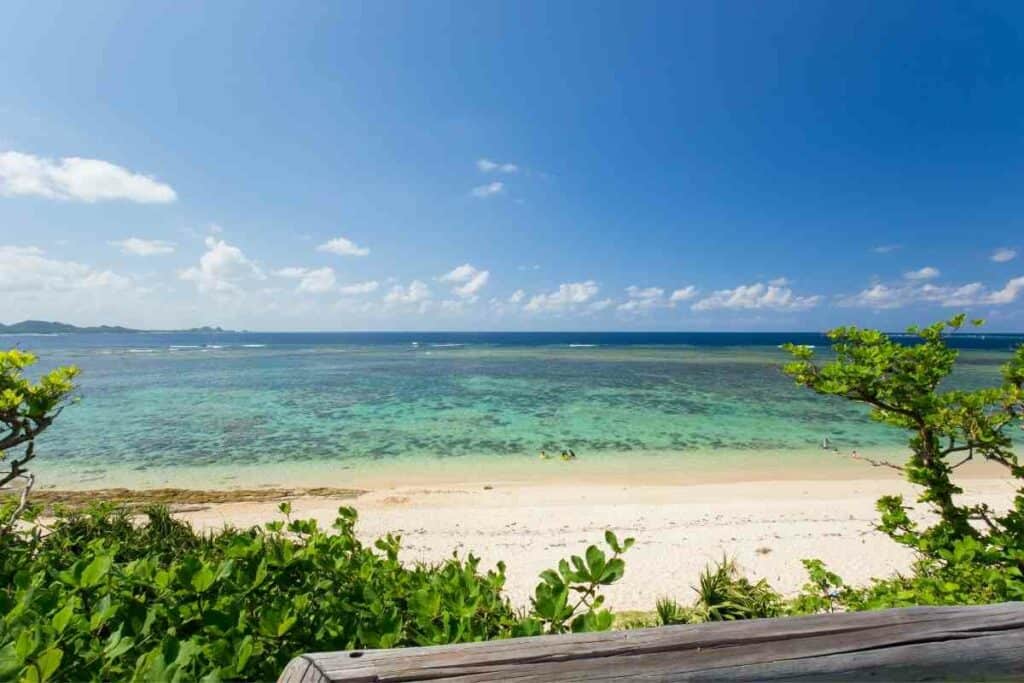
The coral reefs in the water support a rich biodiversity of marine life, giving you an excellent way to explore this incredible underwater environment.
Many diving shops and tour operators around the beach can offer snorkeling trips if you wish.
The only things you need to explore this amazing place are your protective gear:
- fins
- mask
- wet suit
- and life jacket
Here’s a guide to making the most of your snorkeling experience at Yonehara beach.
Table of Contents
What to Expect To See When Snorkeling In Yonehara Beach
Yonehara is one of the top snorkeling places on Ishigaki.
The sea is quite clear since there are no large rivers on the island, resulting in little surplus sediments or contaminants.
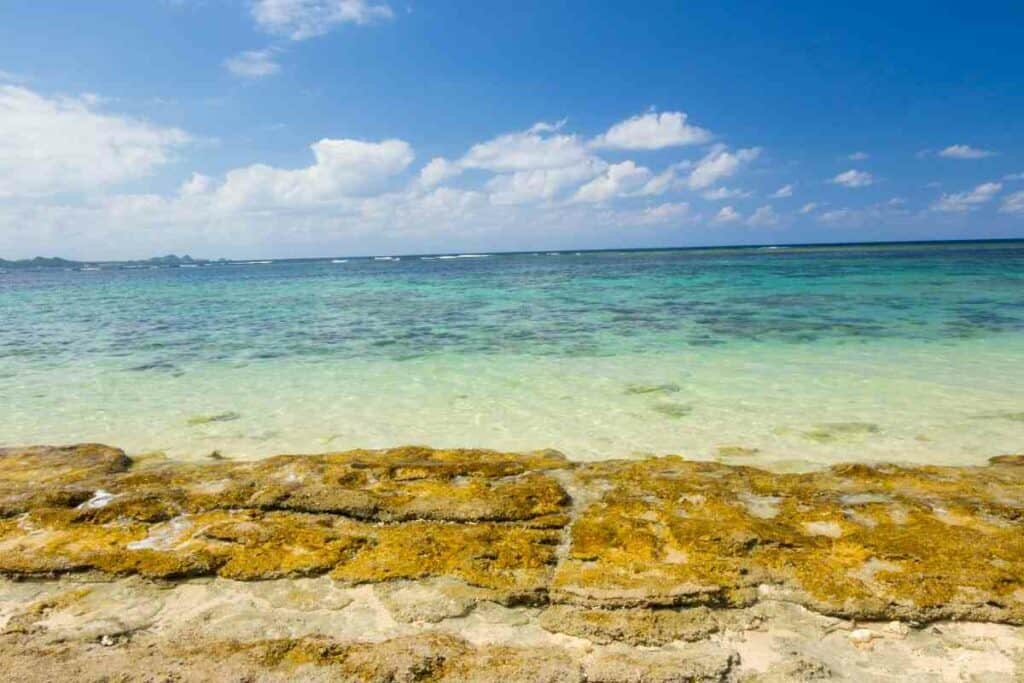
A little does flow by, but it disappears quickly owing to typhoons.
Because the water has few pollutants, it is subjected to a great deal of sunshine.
As a Result – If you dive underwater, you will see a beautiful landscape that will make you feel as if you are staring through a glass pane in an aquarium.
Another appeal of snorkeling in Yonehara beach is the pretty high possibility of seeing sea creatures.
You can see tropical fish of various colors and sizes swim in and out of the reefs swimming in large groups.
Some of the fish you might see include:
- Sea Goldies
- Blue-green Damselfishes
- and Butterflyfishes
However, Pufferfish, Sea Snakes, and Moray Eels are also common sightings. You might glimpse a Turtle if you’re lucky.
You can also find anemonefishes (Nemos).
However, do not approach their nests too closely since some can be highly protective; their bite is not dangerous but can be painful.
Parrotfish can also be found on the reefs. If their bright scales appear familiar, it’s because they’re commonly eaten as sushi and sashimi in Ishigaki.
Since this fish is a regional species you will not usually encounter on the Japanese mainland.
Pay Close Attention: It is also important to note that poisonous Scorpions and Stone fishes are prevalent. While they rarely attack, their camouflage makes them difficult to identify.
Yonehara Snorkeling Rules and Regulations
Learning to snorkel ethically should go hand in hand with appreciating the water. Therefore, it is important to learn some of the specific Yonehara snorkeling regulations.
Don’t Touch Or Stand On Anything
Please keep in mind that coral reefs develop slowly and that it might take thousands of years to establish a new coral reef from the start.
Therefore, do not stand on the reef, do not touch it, do not take anything from it, and be mindful of where you move your diving fins as well since you might accidentally kick the reef when snorkeling.
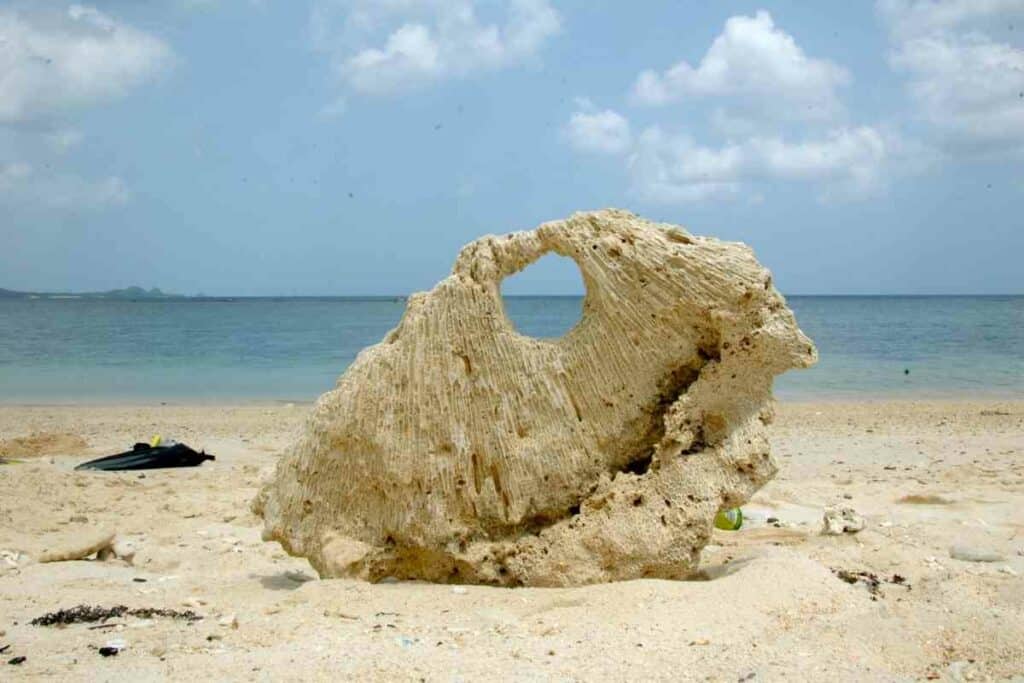
Suppose you become weary while swimming, look for a sandy spot or a flat stone top (free of coral) to stand on.
If you are a beginner swimmer or snorkeler, consider taking a trip that will provide you with expert coaching and support.
Don’t Touch Or Feed The Aquatic Creatures
No matter how tempting it may seem.
Don’t touch fish or other sea creatures, since this might be dangerous. Some species are toxic, while others may respond defensively, injuring you or themselves.
Also, please don’t feed them as this can upset the natural equilibrium of things, and intervention might lead to issues in the long term.
Read next – 10 Best Beach Destinations in Japan
Don’t Take Anything From The Ocean
While it’s tempting to carry home a lovely piece of coral, a little shell, seagrass, or a handful of sand as a souvenir, please leave them in the ocean.
Things to Remember – Although it may not appear so, keep in mind that coral is a living entity, shells are possible homes for many species, and seagrass is essential to the ocean’s health.
These are only some of the reasons why you should keep seashells on the beach rather than in our houses.
Safety Precautions When Snorkeling In Yonehara
In the Yonehara breach, the tides are swift, and there are no lifeguards, so many people drown every year.
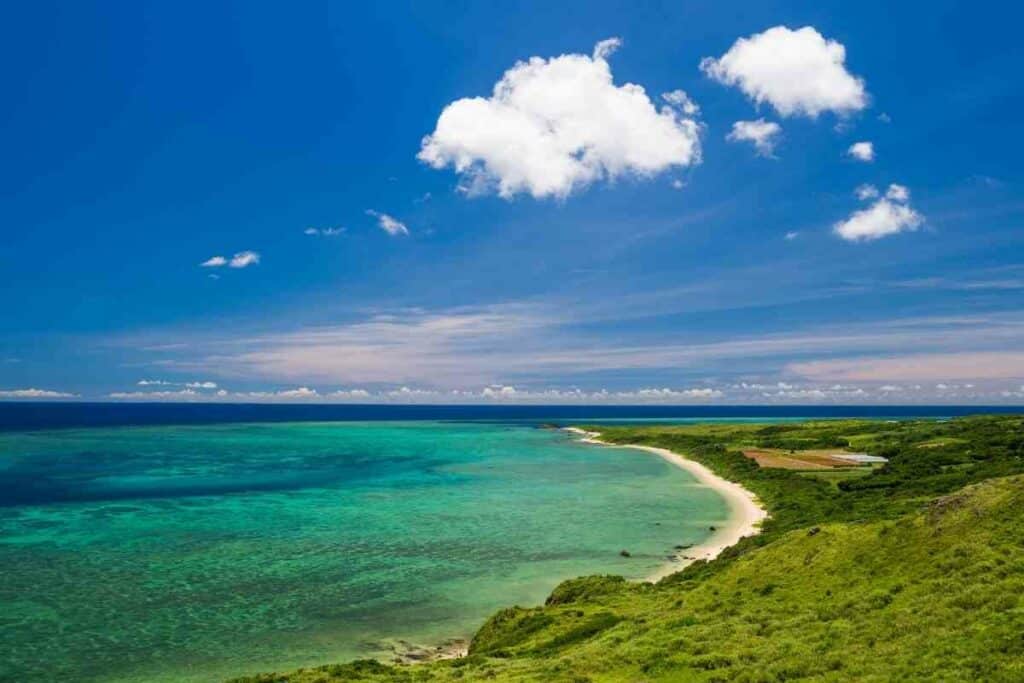
Here are a few safety guidelines when snorkeling in Yonehara.
- When it’s too windy and wavy to swim especially before and after a Typhon, don’t snorkel.
- If you are in poor physical condition, do not go snorkeling.
- Be twice as cautious during high tide and spring tide.
- Don’t go snorkeling by yourself.
- Always keep your snorkeling gear on at all times.
- Examine the signboards or information about potential risks at the Yonehara beach carefully.
- Rip currents should be avoided. If you cannot return, do not swim against the beach; instead, swim to the side.
- Adults should supervise children using snorkel gear at all times.
- When renting, choose your snorkeling equipment with care.
What to Bring When Snorkeling in Yonehara Beach
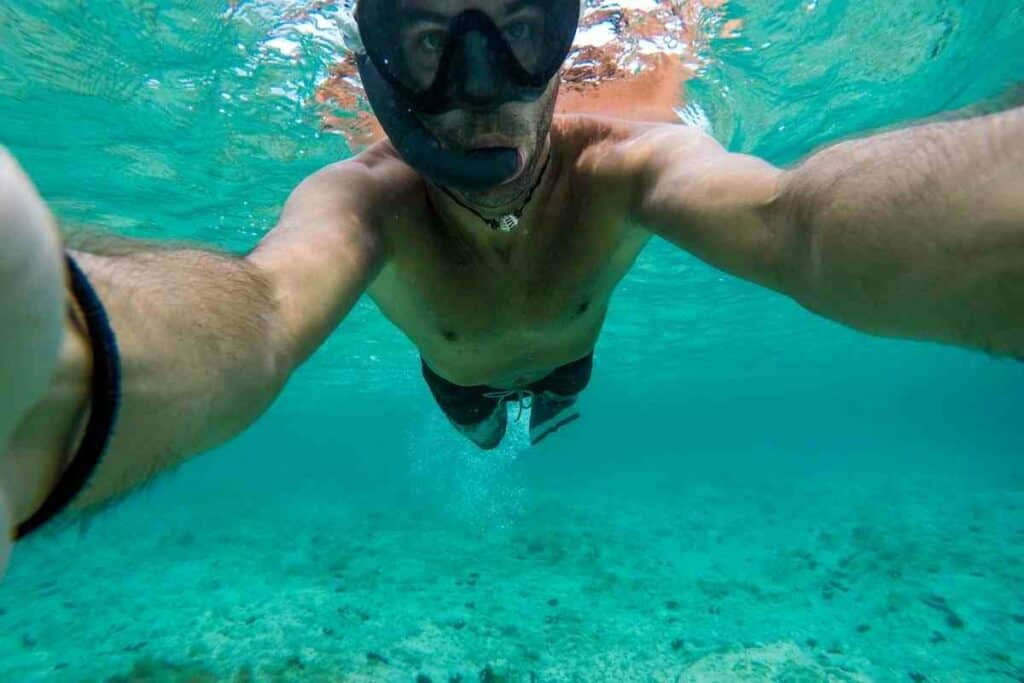
Waterproof Camera
If you want to get the most out of your snorkeling experience, you should carry a waterproof camera or a waterproof case for your phone.
This way, you can take some beautiful pictures of animals underwater to reminisce about it later without worrying about safeguarding the camera.
Snorkeling Gear
These include the following.
Snorkeling Mask
An essential thing to bring should be a well-fitting mask. It should fit your face like an extra layer of skin.
The ideal way to test this is to suction the mask on your face without using the strap; it should remain in place on its own.
Any air leakage indicates that it is not a good fit.
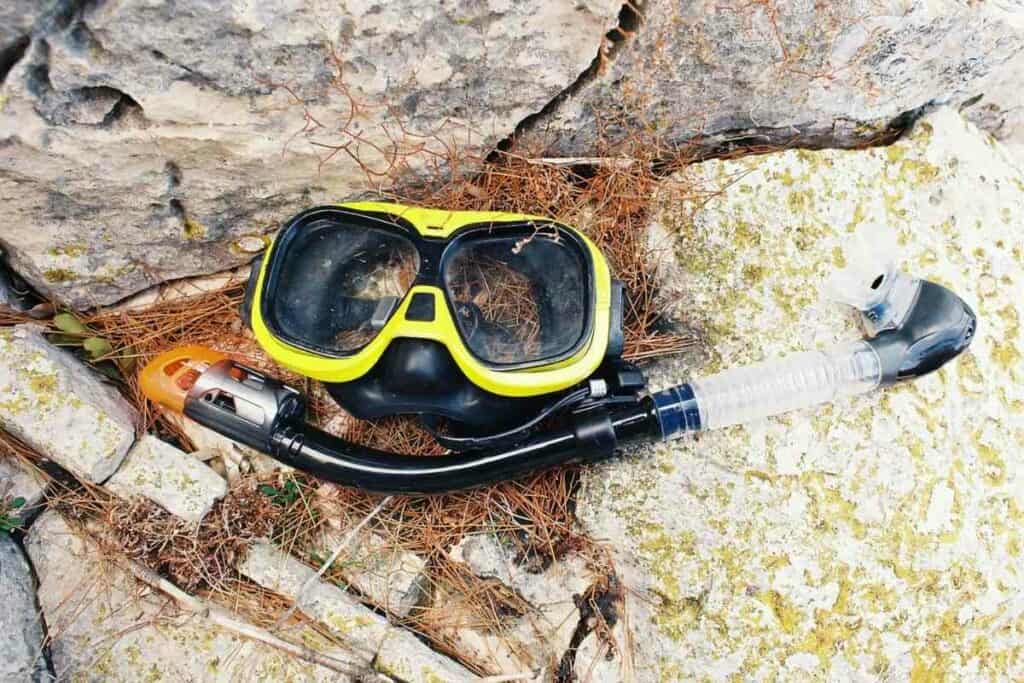
The mask will allow you to see more clearly when staring down into the water.
It should also feature a mouthpiece so you can keep breathing without having to raise your head.
Fins
Snorkeling without fins can be tricky and quite dangerous.
Fins assist you in propelling yourself through the water and overcoming the flowing currents.
To ensure that your fins operate correctly, make sure they are adjusted ahead of time to match your shoe size.
Pro Tip: A full-foot fin will be lighter than an open-heel fin for snorkeling.
Snorkel Leggings
Snorkel leggings, like rash guards, can make you feel much more protected if you are snorkeling for extended periods.
These are certainly more of a female need, although there are several males who can wear them as well.
Float Suit
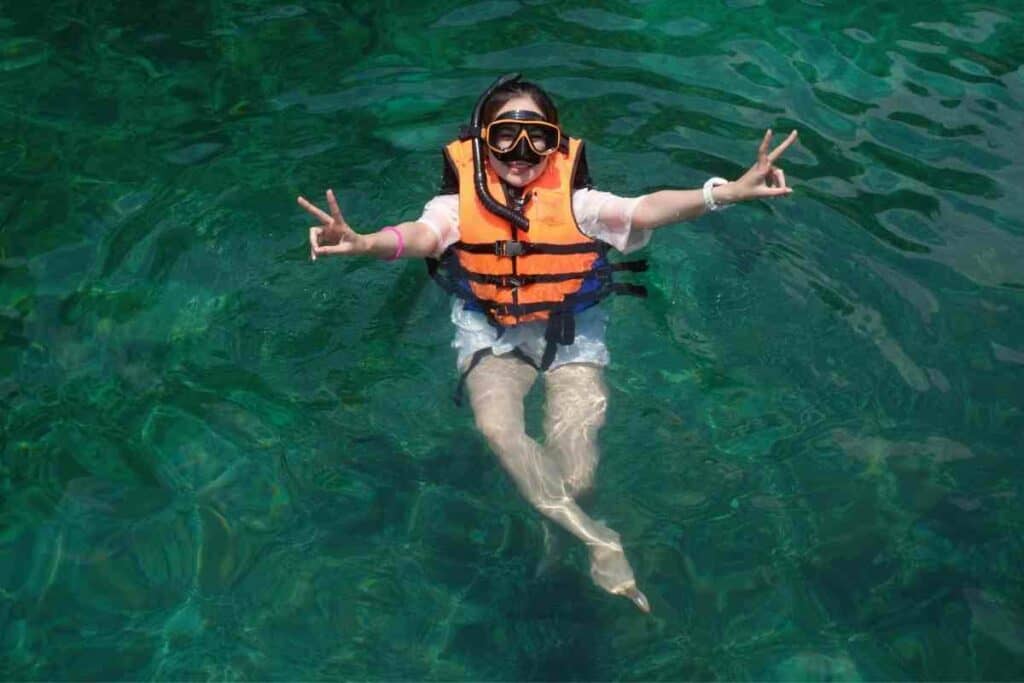
On the Yonehara beach, the tides are swift, and there are no lifeguards, so many people drown every year.
Therefore it is recommended to bring a life jacket when snorkeling. You can opt to carry your own or rent.
This is a must-have, especially if you are an inexperienced swimmer to stay buoyant and ease anxiety.
Wetsuit
Aside from keeping you warm in colder water, a wetsuit will help protect you from the heat and jellyfish stings, as well as offer buoyancy.
Shorty wetsuits (those with short sleeves and leggings that end just above the knee) are perfect for water that’s a little cooler than you can safely swim in,
They are also easier to put on and take up less room in your backpack.
Sunscreen
Bring water-resistant sunscreen because you can get burnt even while you’re out in the water.
Final Thoughts
Yonehara beach offers one of the best spots to go snorkeling.
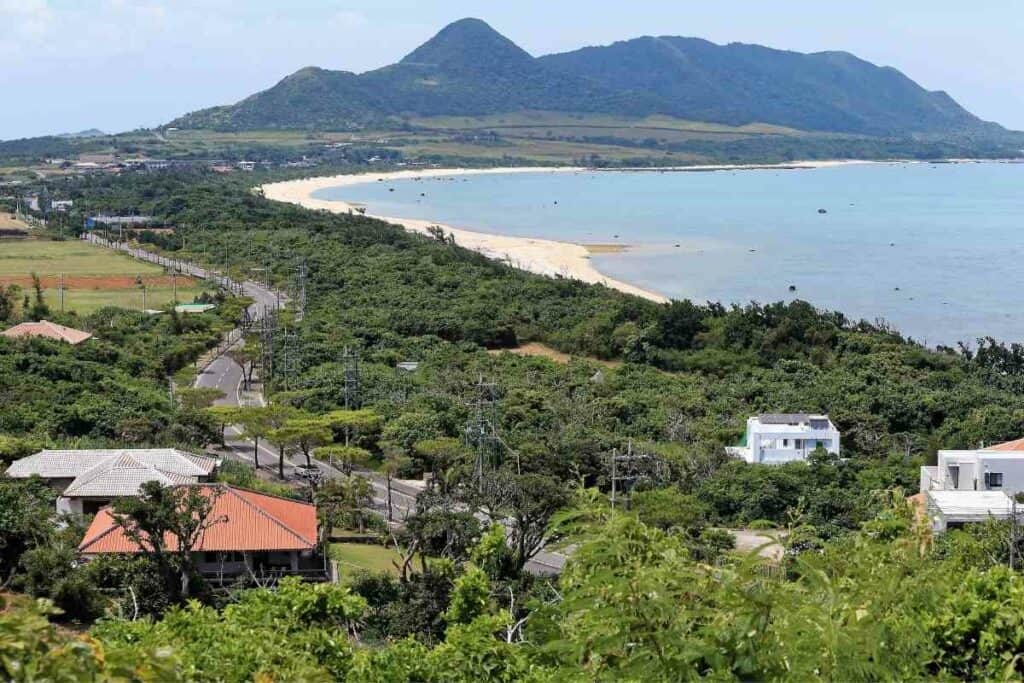
Corals grow right up to the water’s edge, and the instant you walk into it, you’re in a full-grown coral forest.
There are numerous fish of all forms and colors to be seen and other marine species.
The water on the beach is warm so that one can snorkel for hours!
It is transparent since it does not contain suspended particles, thus giving you excellent visibility. Beware of poisonous creatures (sea snakes and stonefish).
Also, corals are pretty sharp, take care, and you better wear a wetsuit if you have one. Otherwise, watch your feet.
Also Read
- 5 Unexpected Tourist Traps in Japan That Could Blow Your Budget
- Are Shinkansen Trains Still the Fastest: Comparing Global High-Speed Rail Systems
- Best Golden Week Destinations In Japan (Top 10 Locations)
- A Traveler’s Guide to Honshu (Japan’s largest Island)
- Best Hanami Destinations In Japan (Top 10 Locations)
- Eki Stamp Book (Gotta Collect Them All!)



